The BIOTA mandarin goby (or mandarin dragonet) is one of the most vibrant and sought after fish in this hobby. There are actually two different species referred to as mandarins, each exhibiting its own beautiful color variations. There is the psychedelic mandarin (Synchiropus splendidus) which offers a tie dye appearance featuring blue, green, red, yellow and orange coloration. These are the most popular of the two gobies and, in my experience, have been the most challenging of the two to keep. The target mandarin (Synchiropus picturatus) has a green body with red and green layered spots. Though it is the least popular of the two, it is known to be more easily trained to accept frozen food.
Finicky but voracious
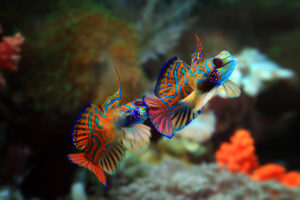 Mandarin gobies require live food such as copepods. Unfortunately, this demanding diet often leads to their downfall in captivity. As it is crucial to be able to offer them plenty of food, breeding your own copepods can save the stress of constantly feeding them. You can successfully breed pods in your aquarium by (1) providing lots of live rock, (2) regularly dosing phytoplankton and (3) installing a refugium.
Mandarin gobies require live food such as copepods. Unfortunately, this demanding diet often leads to their downfall in captivity. As it is crucial to be able to offer them plenty of food, breeding your own copepods can save the stress of constantly feeding them. You can successfully breed pods in your aquarium by (1) providing lots of live rock, (2) regularly dosing phytoplankton and (3) installing a refugium.
Even while successfully breeding them in your aquarium, due to the fast rate mandarins will consume them, it isn’t a bad idea replenish your copepod population each month. Mandarin gobies spend the majority of their days hunting across the aquascape, which is how it may seem your pod population dwindles so fast. Training your mandarin to consume frozen food can reduce the stress of needing large populations of copepods at all times. Even though they will still hunt throughout the day, having them successfully eat frozen food will fill up their bellies faster. Since they are not very fast fish, I usually turn my pumps off when I feed and create a pile of food away from the other fish so my mandarin can sit and chow down for a good 10 minutes; then I will turn my pumps back on and whatever is left, the other fish will eat.
Mandarins are the one fish you don’t have to stress about overfeeding, as they consume such tiny bitefuls and graze so slowly that you actually want to make sure they are powering down food. In my experience, I’ve had greater success at getting wild target mandarins to eat frozen food than wild psychedelic mandarins.
Captive bred, easily fed
Now this brings us in to wild versus captive bred mandarin gobies. For the longest time, there was no success in breeding mandarin gobies in captivity; that made this fish one of the hardest to keep in captivity due to its demanding diet. Fortunately, many places are now successfully breeding them in captivity. Expect to pay around three times the price for a captive bred mandarin goby. This may sound rather expensive, however, this cost goes into the amount of time spent training and raising the babies on frozen food and pellets and taking care of them. Although these cultured specimens come at a higher price, I will always recommend purchasing a captive bred mandarin over a wild caught. Far more often, captive bred mandarin gobies will eat prepared items such as frozen food and pellets. This saves you the hassle of trying to train them on frozen food yourself and spares you the stress of having a mandarin goby with a sunken belly.
Most wild caught mandarins struggle to keep weight on as they require so much live food. If you don’t have a stable copepod population, they quickly starve. When a mandarin goby is caught in the wild, it may go through a quarantine, however, not near the same amount of care goes into them. The unfortunate reality is that you may go through three mandarins before you get one that does well. Many people have success their first time getting one, and some people just don’t. Wild caught mandarins can always be a gamble as they are used to plentiful amounts of food all the time in the wild and once they’ve reached captivity their needs may not be able to be met. So paying a larger cost for a captive bred mandarin is well worth it: You receive a guaranteed fat and happy fish that will readily take food from you.
This also helps with the conservation of the population in the wild. Not many saltwater fish have been successfully bred in captivity, so the majority of your fish are still wild caught. If a species is available as captive bred, I will always choose that over the wild caught counterpart.
A happy home
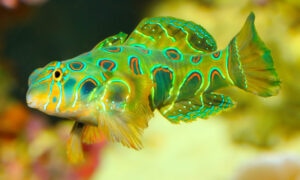 Whether wild caught or captive bred, mandarins require a considerable amount of care. For sure, they are not a “beginner fish” as the keeper must supply the type/amount of food they require. Mandarins only reach around four inches in size; however, because a large number of pods must be maintained, a minimum tank size of 50 gallons is recommended for each individual specimen. Having lots of live rock in your aquarium can help with your copepod population as it can give them a proper place to hide and space to proliferate.
Whether wild caught or captive bred, mandarins require a considerable amount of care. For sure, they are not a “beginner fish” as the keeper must supply the type/amount of food they require. Mandarins only reach around four inches in size; however, because a large number of pods must be maintained, a minimum tank size of 50 gallons is recommended for each individual specimen. Having lots of live rock in your aquarium can help with your copepod population as it can give them a proper place to hide and space to proliferate.
Your mandarin will also appreciate having many spots to explore and hide in. These fish can be quite shy and easily frightened when first added to the aquarium. However, once they become comfortable, they will zoom around and eventually not be startled when you approach the tank. In some instances, mandarins become rather social and will even eat out of their hands of their owners. That being said, it is still best not to harass or force your mandarin to be out in the open. Give it the proper time and space it needs and once it is comfortable it will come out. These are sensitive fish and it is our job as fish keepers to make sure we can provide them with the absolute best care possible!

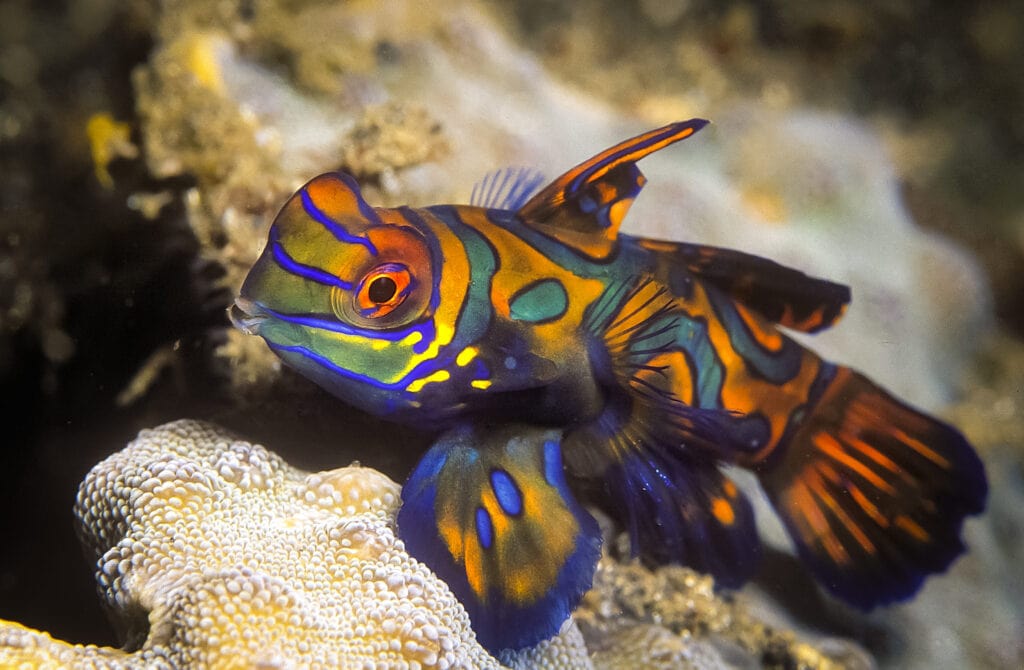
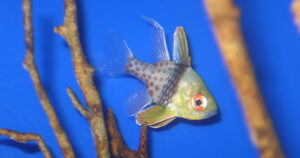
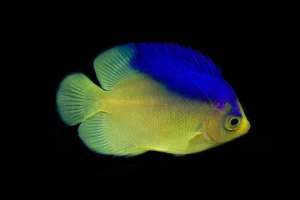
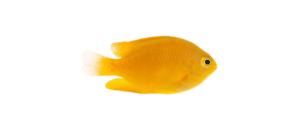

william francis says
Thank you for the article. This answered a lot of questions.
William Aaron Condon says
Algaebarn’s copepods help my mandarin thrive
John J E Bogart says
Love thus guy !
brenna406 says
Love it!
RONNELL C TAYLOR says
When I get a nice supply of copepods going i will be get me a nice blue mandarin.
Pat Hilliard says
I have found if you add a couple fist sized or larger, tightly branched coralheads, per 10g into your rockwork, pods will reproduce so much inside of them that you never run low. You actually a mandarin or leopard wrasse to keep the tank from looking too buggy.
Bill says
Hi , by coral heads do you mean torches , hammers etc?
Thanks
Samantha Obergas says
We believe that is what he means. However due to the fact that most corals that have heads have mouths this might not be 100% true that they would reproduce there. Rather they would be a source of food for the coral.
Cuauhtemoc Aguilar says
Need some